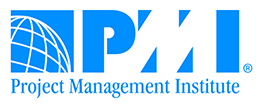A Brief Introduction to Agile Scrum
- Is an approach to managing work
- Is supported by a manifesto that outlines principles and values
- Has a key phrase – inspect and adapt
- Product Owner – Owns the vision for the product. Is responsible for prioritizing requirements based on business need
- Scrum Development Team – Cross-functional team that shares leadership. Team members commit to each other on a daily basis.
- Scrum Master – A person who facilitates the scrum process. His or her job is not to manage the team but to facilitate and remove impediments.
Scrum is run in iterative time boxes (called sprints) that can be anywhere from two to four weeks in duration. At that end of that sprint, the team has what is called a “potentially shippable product” – ready to hand to a customer, put on a store shelf or show to a stakeholder.
This is where the customer sees her product – working software. Not a PowerPoint.There is a belief in the world that Scrum does not support planning. This is not true. But the difference is that while in traditional project management we plan heavily up front then execute to that plan, in Scrum, we plan prior to our first sprint (sprint zero) and at the beginning of each subsequent one.
Why do all this if traditional project management works so well? Well, does it? In some cases, with well-understood products, yes. For those projects whose requirements are uncertain or have an R&D flavor to them. Agile is definitely something to consider. This is true in part because, for those end users and customers who don’t know what they want, changes can be introduced into the process anywhere along the way.
The mechanics of Agile can be learned in a day or two of training. The hard part in a waterfall-to-Agile transformation is the cultural impact and reaction from those who don’t like change. Agile is not the answer to all your project management problems. But it has its advantages and is well worth exploring.



Comments are closed.